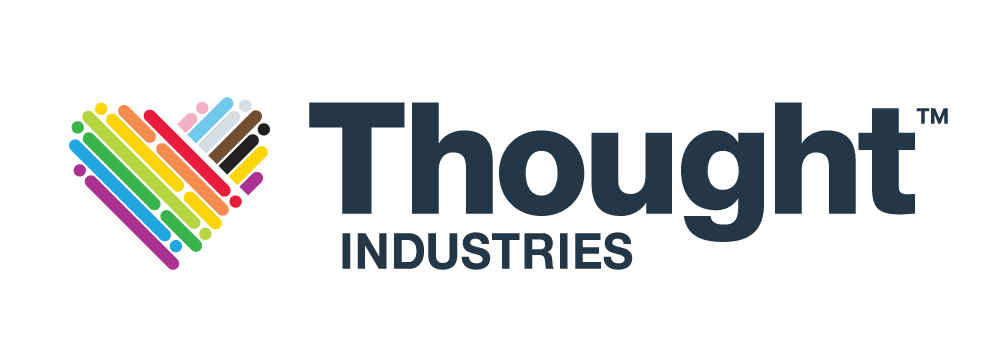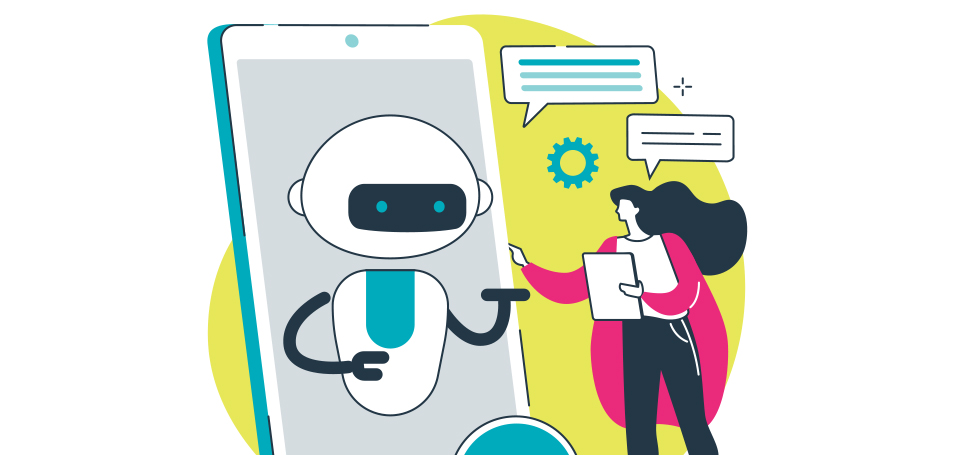Artificial Intelligence and Augmented Intelligence are a big deal right now. There are so many tools using generative AI to help perform the tasks we do every day. It’s important to understand what we may already have available, and where we may need to optimize our toolkit to better utilize and prepare for the use of augmented intelligence. One thing is certain: this new wave of AI technology has huge implications for the learning industry. Every learner is unique – and now, with this opened door of new AI tools, we actually have the means to deliver customized, engaging, highly effective learning experiences for everyone.
In my last blog post, I gave an overview of the 15 most common AI terms you’ll want to understand as we move deeper into this new era. In short, there will be an explosion of AI tools coming our way, and it will take careful thought about how to use them ethically and without bias, and still stay secure.
Looking ahead, here are five ways the AI explosion will boost the impact of learning experiences:
1. Personalizing Learning
Personalized learning is one area that is already established for most learning experience providers. This is what provides the consumer-grade experience that we should expect from our learning portals through recommendation engines, adaptive learning paths and real time assessments.
Recommendation engines take personalized information provided by the learner and suggest options based on that information. It could be based on personas that help identify which role the learner plays in the various ways people use the tools. Power users would see different content from a casual user, or an administrator. Self-professed levels of experience may be challenging, since each person uses a different set of their own criteria to determine if they are already experienced, but this is usually good criteria on which to build. Geography may also come into play, since different countries or jurisdictions may use the tools differently than another. And of course, there are many more options to use based on the types of tools learners will be working with and the call to action we’re expecting from the learning.
Adaptive learning paths should also be available for use in an AI-powered learning environment. They may not be defined exactly the same, but the machine learning technology at the heart of the recommendation engine is what helps build this capability. A set of criteria develops a learning path that can be supplemented with “choose your own adventure.” This creates the best of both worlds – an ability to look for something specific as well as being served up content that pertains to the role, experience, geography or any other criteria that is important for the learner. Check out Thought Industries for examples of this technique.
Real time assessments are the part of personalization that not all portals may have available. It may be something that requires an integration to effectively insert into the learning environment. But imagine using assessments to pre-test for knowledge and launch a prescriptive learning path based on the results of that assessment, while continuing to assess during learning and sending users through a loop if the learning assessment indicated a repeat would be beneficial to reinforce a concept. That’s machine learning (ML) understanding the options and pushing the learner in the direction they need to move toward.
The benefits of personalized learning include boosting engagement, quick turnaround, and task automation. We can leverage the structure of recommendation engines and federated search (another tool you should already have access to). We can automate and see responses to questions using chatbots, or quickly pivot an adaptive learning path based on responses to questions or quizzes.
There are also challenges connected to the technologies. Machine learning needs data, and will scrape through all kinds of data to learn. People will need to use the system for it to build out preferences based on what has happened in the past, so if we can’t boost engagement, there may not be enough content for the system to learn. What does that do to your intellectual property (IP)? How do you corral the system so that your IP doesn’t go out to the internet. There have been several stories lately about problems with copy/paste to generative ai.
What about bias? If ML learns from everywhere, it will also learn bias. How do we build a plan to combat it? It’s an undercurrent of the entire AI discussion for learning experiences. How do we keep the data from the personalization attempts? How does that fit into data security?
2. Gamification
As we build on the personalization concept, the standards of gamification should already be available. Leaderboards to develop competition, badging to show learner milestones, and visible progression through a learning path using something like train stops or an adventure map. Combine this concept across the customer journey, and level up by crediting the learners regardless of where they learn – through KB articles, attendance at webinars, community posts, and more.
This helps build engagement toward specific goals that we can define, or that we can let the learner define as part of the “choose your own adventure”. It creates a dynamic learning environment that keeps the learner coming back for more.
At least that’s been the promise. And for the most part, it’s true. Check sites like Duolingo. They build gamification into almost every interaction with the learner. Combined with the personalization aspects of the learning journey, we now have a very powerful tool.
Challenges can arise if the learning journey is not clearly defined. This is both a structural and strategic blocker that could hinder learner progress and adoption. How do we build process around the concept of failure, whatever that can mean, to re-engage a learner? Is gamification the answer? Not sure. But planning on what gamification could look like, and building toward outcomes that benefit the learner will certainly help re-engage.
Accessibility is also at the forefront of many discussions, and making sure that accessibility is built into the gamification strategy is important. Questions to ask:
- How would a screen reader render this page?
- What happens with badge colors?
- What does Siri/Alexa/Bing/Bixby (pick your favorite voice assistant) see?
3. Assessments
While the first two areas are already in play for many, assessments present a clear opportunity for AI to become critical in learning experiences. In some cases, we pre-test to properly personalize the learning journey for the learner. In some cases, we evaluate as we go in the hopes of recording comprehension of the material. And then we may close out a concept via post-learning assessments, with the hope that the numbers increase in the post-assessment from the pre-test. Many programs will choose to do all three. Text analysis presents an opportunity to revolutionize this process. By utilizing these tools in customer education , we present ourselves with an opportunity to not only advance from choice-based questions, but combine this analysis with the concierge experience to create an elevated learning experience. This could be VERY exciting!
There are many rules to follow for building a certification on product or industry knowledge. Part of the structure in building a certification program includes two very distinct issues that are varying degrees of importance, depending on the organization: (1) building choice-based exams (with or without scenarios), and (2) proctoring exams. The choice-based exam questions fall into the same category as assessments. We get much more impact from an AI-powered learning experience. Microsoft has been doing some outstanding work in this area. Check out Liberty Munson’s work. Exam proctoring can also leverage that concierge experience by utilizing augmented intelligence to track all of the key points required.
This is probably my favorite category, since there is so much potential here, and the benefits are significant. After discussing the ways we can use AI, adaptive testing allows for many options. Duolingo is one of the best examples of how to “re-ask” questions if the incorrect response is initially provided. Objective scoring gives an opportunity to do more than just make a selection from a choice list of responses. We can use text responses, or practicum-based options and let the AI tools perform the analysis. This has been something I have wanted for a very long time. And all of this effort provides data that leads to insights across the organization, not necessarily just in customer education.
This is machine learning full force, and as such, means that the tools will always be learning from every single interaction. The challenge we face is making sure that bias doesn’t take hold during that learning process. Blind response analysis, separation of demographic information, and solid data security measures can certainly help in this area.
Testing security will always be a challenge. No matter how good we get at structuring and protecting our exams, and who takes our exams, there is always someone out there trying to figure out how to get a copy of our questions, or take a test on someone else’s behalf. Check out Kryterion, and what they’re doing with this aspect of testing.
4. Content Development
This area has serious potential to help build the use of AI in learning experiences. Generative AI tools like ChatGPT are already infiltrating the work we do to build course outlines, or write course summaries for websites, or generating quiz questions for the end of learning module. And those tools, in combination with video and voice, make powerful time-saving allies as teams are continuously asked to do more. Check out Tavus, Synthesia, Videate, or Murf.
Generating text, images, audio and video using tools already available brings with it a certain amount of risk, but many of the vendors putting together solutions are taking up the middleware or browser extension space to make sure that the content used to “learn” about the product without the fear of information getting in places it doesn’t belong. This is the explosion of tools that will begin to take over this market. Check out LEAi
The benefits with these tools will certainly be time savings, tackling the “do more” line item in many organizations. Consistency will also be a little easier to develop, since the AI tools will allow for the same “voice” to be used with all content. The challenges with bias and ethics will still be present, and quality control will still need to be on the lookout for “hallucinations” – pure fabrication of content by the AI engine that has absolutely no basis in fact.
5. Data Analytics
Data and reporting have always followed a particular pattern in the maturity of the content. Audit reporting is most always the starting point. AI in learning experiences gives us the power of being able to leverage data across applications – support data, customer success data, customer education data, all in one data lake making it more accessible to us, to our leadership, and to our customers.
Progression from audit reporting to analytics brings in the pretty pictures. The biggest benefit is the gift of time. Database tools are providing automatic suggestions for best fit designs to display the information most effectively. In addition, the calculations come real time. Benefits to us, to our leadership and to our customers.
The real power of machine learning and deep learning, however, lies in predictive analytics. The earlier types of reporting focus on the lagging indicators. They report on the past. Once we understand the past, however, we can predict the future. Predictive analytics will help set measurable goals, established using known quantities. Data-driven takes on a much more powerful meaning when we leverage history to help us predict success. Again, benefiting us, our leadership, and our customers.
The takeaway from all of this is that you should be pushing your vendors and your teams to leverage augmented intelligence. Many of these tools should already exist in your ecosystem – personalization, gamification and even some assessment activities should be tools you are already using. If not, build a plan to include them. So should analytics. There is no way to tell the complete customer story by just telling the story of the learner. Integrating data with other teams is key. Getting to that predictive stage makes proving success much easier.
Content development is changing at a frenetic pace. These AI tools will continue to refine what we build, how we build it, and how long it takes to do all of that. The cycles will continue to become smaller as these tools mature. Get ready. Don’t let the AI explosion overtake or overwhelm your organization or your team – even a team of one.



